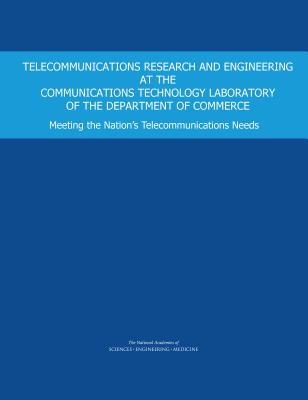The Department of Commerce operates two telecommunications research laboratories located at the Department of Commerce's Boulder, Colorado, campus: the National Telecommunications and Information Administration's (NTIA's) Institute for Telecommunications Sciences (ITS) and the National Institute of Standards and Technology's (NIST's) Communications Technology Laboratory (CTL). CTL develops appropriate measurements and standards to enable interoperable public safety communications, effective and efficient spectrum use and sharing, and advanced communication technologies. CTL is a newly organized laboratory within NIST, formed mid-2014. As it is new and its planned work represents a departure from that carried out by the elements of which it was composed, this study focuses on its available resources and future plans rather than past work. The Boulder telecommunications laboratories currently play an important role in the economic vitality of the country and can play an even greater role given the importance of access to spectrum and spectrum sharing to the wireless networking and mobile cellular industries. Research advances are needed to ensure the continued evolution and enhancement of the connected world the public has come to expect. Table of ContentsFront MatterSummary1 History of the Boulder Telecommunications Laboratories2 Assessment of the Communications Technology Laboratory3 Collaboration at the Boulder Telecommunications Laboratories4 National Telecommunication Research Needs and the Future Role of the Boulder Telecommunications LaboratoriesAppendix A: Statement of TaskAppendix B: Committee BiographiesAppendix C: Briefers to the CommitteeAppendix D: The Value and Use of Wireless TechnologyAppendix E: Acronyms
Get Telecommunications Research and Engineering at the Communications Technology Laboratory of the Department of Commerce by at the best price and quality guranteed only at Werezi Africa largest book ecommerce store. The book was published by National Academies Press and it has pages. Enjoy Shopping Best Offers & Deals on books Online from Werezi - Receive at your doorstep - Fast Delivery - Secure mode of Payment
 Jacket, Women
Jacket, Women
 Woolend Jacket
Woolend Jacket
 Western denim
Western denim
 Mini Dresss
Mini Dresss
 Jacket, Women
Jacket, Women
 Woolend Jacket
Woolend Jacket
 Western denim
Western denim
 Mini Dresss
Mini Dresss
 Jacket, Women
Jacket, Women
 Woolend Jacket
Woolend Jacket
 Western denim
Western denim
 Mini Dresss
Mini Dresss
 Jacket, Women
Jacket, Women
 Woolend Jacket
Woolend Jacket
 Western denim
Western denim
 Mini Dresss
Mini Dresss
 Jacket, Women
Jacket, Women
 Woolend Jacket
Woolend Jacket
 Western denim
Western denim
 Mini Dresss
Mini Dresss






























































